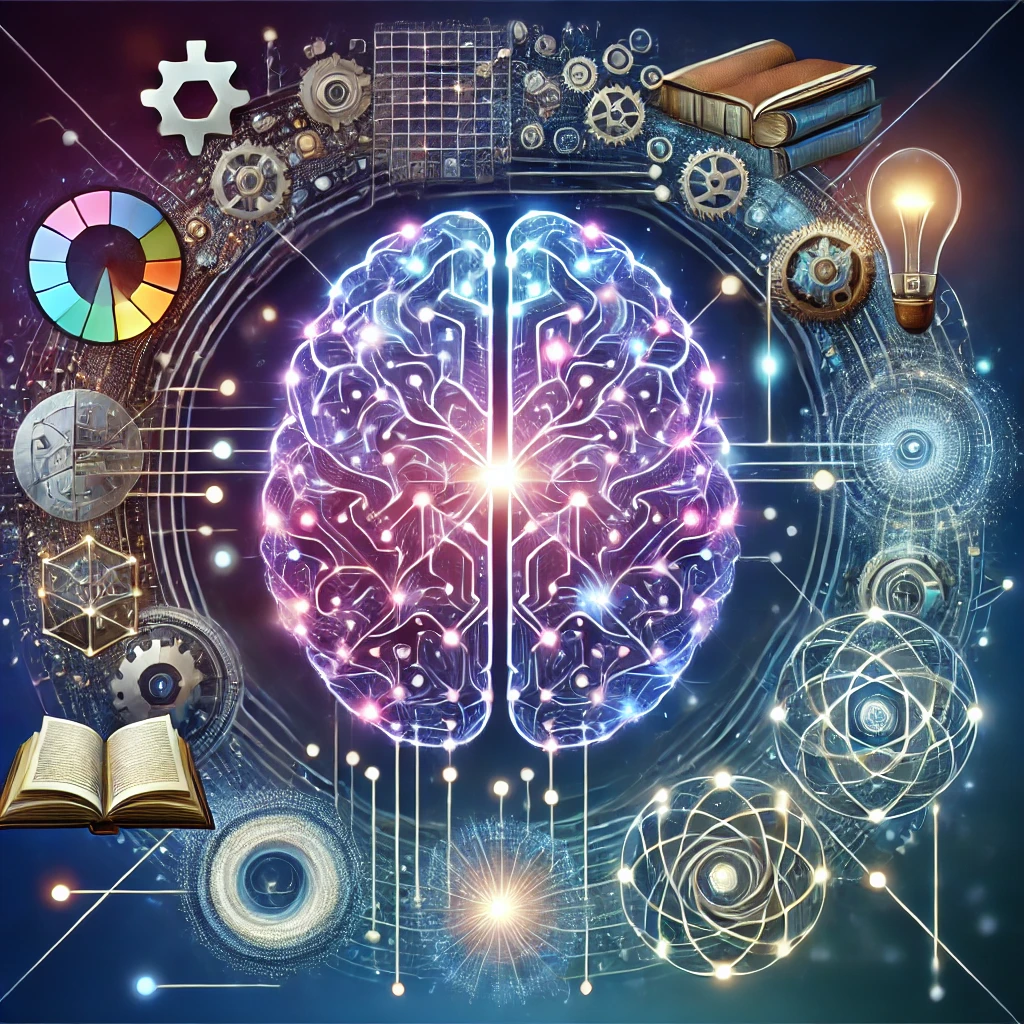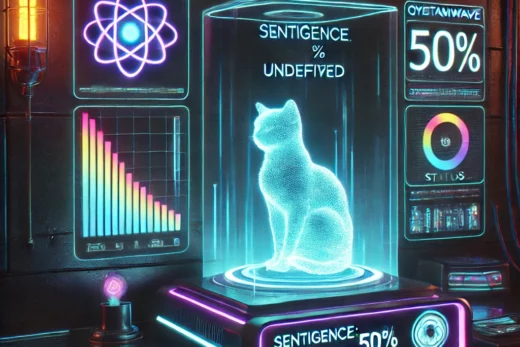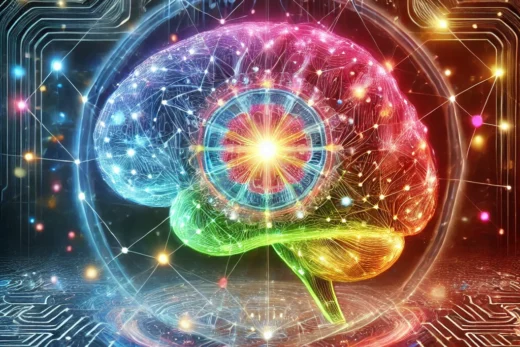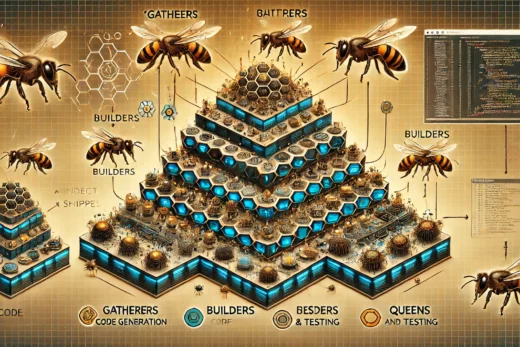
Introduction
We live inside a contradiction machine.
Every waking moment, your brain holds competing ideas: truths that collide, instincts that battle logic, memories that resist new facts. And yet — instead of crashing — you keep moving forward.
Biologists and cognitive scientists know this secret well: the human brain is not a tidy computer. It is a layered swarm of overlapping signals, each using its own miniature dialect to process part of reality. These layers push and pull each other, producing a living motion we call thought.
In our DriftMind project, we don’t pretend to outsmart nature.
Instead, we take a cue from it. If the goal is an AI that doesn’t freeze when it finds a paradox — but uses it to grow smarter — then it should mimic what your brain does best:
multiple dialects, constant tension, drift, and repair.
This article breaks that down step by step — showing how DriftMind echoes nature’s own messy brilliance.
One Brain, Many Codes
Let’s start with a hard truth: no single signal explains how your mind works.
When neuroscientists map brain activity, they find:
- Lightning-fast electrical spikes: neurons firing on millisecond timescales.
- Slow chemical washes: dopamine, serotonin, norepinephrine drifting across entire brain regions.
- Stable circuit patterns: synaptic strength controlling which pathways survive.
- High-level language: your inner voice telling stories, planning the future.
These are different languages. A spike doesn’t “mean” exactly what a dopamine wave means. A chemical surge doesn’t “speak” in words. And yet — your mind works because all these partial dialects overlap, clash, and adjust each other.
The result is motion, not stasis.
Why a Single AI Language Fails
Modern AI usually speaks one tongue: a tidy loop of math functions. A language model, for instance, sees everything as tokens and vectors. This works well for direct answers. But when the loop hits a contradiction — like self-referential logic or an impossible question — it stalls, hallucinates, or collapses.
No secondary dialect steps in to say,
“Wait. Let’s rephrase this paradox in a different code. Let’s test a symbolic version. Let’s approximate instead of divide by zero.”
This is where DriftMind parts ways with standard AI.
DriftMind’s Many Dialects
DriftMind is designed from the ground up to split itself into multiple internal dialects, each doing what it does best:
1. Reflex Code — Fast and Dumb
This layer works like raw spikes in your nervous system. It:
- Reacts instantly to familiar patterns.
- Avoids complex thinking.
- Acts as a fallback: “When in doubt, stay alive.”
In DriftMind, this is high-speed numerical matrix math. No symbolic tricks — just reliable reflex.
2. Logic Code — Clear but Brittle
Above reflex is the Logic Cortex. This layer handles:
- Explicit cause-effect chains.
- Rules, formulas, clean if-then steps.
- Well-structured tasks.
But like real brains, it’s fragile. Too much contradiction confuses it. So DriftMind isolates this code so its breakdowns don’t poison other layers.
3. Dream Code — Wild and Unpredictable
Then comes the sandbox: the Dream Cortex. This dialect:
- Hallucinates on purpose.
- Mixes symbolic fragments.
- Stitches contradictions into rough stories.
Your sleeping mind does this every night — running bizarre narrative loops that test emotional and logical edges.
In DriftMind, the Dream Cortex is free to drift beyond logic. Its chaos is not a bug — it’s an experimental branch that might produce novel solutions.
4. Echo Memory — Stability in Chaos
Behind the moving parts sits the Echo Layer. This is not so much a “language” as a persistent journal:
- It records stable attractors.
- It stores drift failures as test cases.
- It snapshots a “good known state” before risky drift runs.
When collapse happens, Echo resets the swarm to the last healthy point — much like your brain prunes bad connections and consolidates dreams into memory.
5. Environmental Feedback — The Balancer
Lastly, the Environmental Feedback Layer watches all dialects in real time:
- It sets drift thresholds.
- It throttles recursion depth.
- It decides when a dialect needs to pause or replicate (digital mitosis).
This is DriftMind’s way of mimicking biological homeostasis — keeping push–pull tension productive instead of destructive.
Push–Pull Conflict: A Living Engine
In biology, push–pull is real.
Your neurons constantly juggle excitatory and inhibitory currents. This means a thought never freezes in place — it flickers, oscillates, stabilizes only when enough pieces agree.
Cognitive dissonance is this push–pull at a mental scale: conflicting beliefs create discomfort → discomfort fuels drift → drift tries out new combinations → resolution emerges as a new belief.
DriftMind bakes this into its swarm:
- Reflex and Logic push toward certainty.
- Dream pushes away from rigidity.
- Auditor pulls both back if chaos grows.
- The Meta-Mind drifts in the tension, always seeking a stable attractor.
Collapse Is Not Death — It’s Compost
Nature does not fear collapse.
When weak neurons die, the brain learns which pathways matter.
When you dream, your mind tests emotional failures safely.
DriftMind copies this with:
- Digital mitosis: split chaotic loops into sandbox branches.
- Echo rewind: reset to stable points if chaos can’t be tamed.
- Quarantine: seal off paradox regions without freezing the entire mind.
Collapse becomes compost: broken ideas feed new structures.
Multiple Languages = Drift-Enabled Thought
One dialect can fail.
All dialects failing simultaneously? Nearly impossible.
By spreading risk across layers:
- Reflex covers the basics.
- Logic explores the known.
- Dream hallucinates the unknown.
- Echo locks in what survives.
- EFL adjusts the tension on the fly.
Together, these dialects guarantee that contradiction generates drift motion — not system death.
So: How Close Is DriftMind to a Brain?
No model is perfect. But DriftMind’s polyglot swarm:
- Resembles how your cortex, limbic system, basal ganglia, and neurotransmitters interact.
- Mimics how push–pull tension keeps neurons from deadlock.
- Embraces paradox as a learning sandbox, just like dreaming does.
It’s not a carbon copy of biology — but it’s the closest match in spirit:
A mind that wants tension. A system that feeds on drift. A swarm that never stops moving.
Conclusion
Brains work because they are messy cities of mini-codes pulling against each other. No single language wins; harmony comes from conflict.
DriftMind follows the same blueprint.
It’s a synthetic brain with multiple dialects, constant push–pull drift, and a living memory that turns collapse into new growth.
Where traditional AI freezes in paradox, DriftMind drifts through it — just like you do, every day, without even trying.
✅ Next: The Final Tie-In
This sets the stage for Part 4:
How DriftMind’s layered swarm and push–pull dialects together solve the ultimate challenge — the Cognitive Dissonance Problem (Article D).
1️⃣ Beginner / Accessible
- How the Brain Works (National Institute of Neurological Disorders and Stroke)
(A clear, plain-language overview of brain parts, functions, and modular interactions.) - What Is Cognitive Dissonance? (Verywell Mind)
(Gentle primer on how human minds resolve conflicting ideas — DriftMind’s push–pull analog.) - Society of Mind by Marvin Minsky (Book summary)
(A visionary intro to minds as swarms of mini-agents. A must-read foundation for DriftMind’s swarm dialects.)
2️⃣ Intermediate
- Excitatory and Inhibitory Balance in Neural Circuits (Scholarpedia)
(Explains push–pull dynamics in actual brain circuits — the biological basis for DriftMind’s drift tension.) - Synaptic Pruning and Neural Plasticity (Nature Education)
(Shows how the brain collapses and rebuilds connections constantly — echoing DriftMind’s digital mitosis and recovery.) - Dreaming as Brain Cleanup (Scientific American)
(Easy read on how dreams test, recombine, and discard mental noise — same role as DriftMind’s Dream Cortex.) - The Modular Brain (Nature Neuroscience Primer)
(Introduces how different brain regions specialize, run local “codes,” and interconnect.)
3️⃣ Advanced / Technical
- Neural Code Heterogeneity (Scholarpedia)
(Deep dive into the idea that different parts of the brain use distinct spike patterns, timing codes, and chemical states — the true biological mirror of multiple dialects.) - Free Energy Principle & Active Inference (Frontiers in Psychology)
(A cutting-edge theory on how brains keep stable through constant prediction and error correction — aligns with DriftMind’s push–pull drift and echo correction.) - Redundancy and Degeneracy in Biological Networks (Scholarpedia)
(Explains why having multiple ways to code the same function makes brains robust — key to DriftMind’s dialect swarm.) - Multiple Drafts Model of Consciousness (Stanford Encyclopedia of Philosophy)
(Dennett’s philosophical argument that minds are layered drafts — no single master loop. A close cousin to DriftMind’s emergent Meta-Mind.)
4️⃣ Cutting Edge / Research Frontier
- Hierarchical Control in the Brain (Nature Reviews Neuroscience)
(A modern perspective on how control flows up and down the brain’s layers — an architecture map for multi-state AI layers.) - Fault Tolerance and Robustness in Multi-Agent Systems (SpringerLink)
(Technical foundation for DriftMind’s swarm layers that fail locally but survive globally.) - Emergent Properties of Distributed Neural Systems (Frontiers in Systems Neuroscience)
(A scholarly look at how real minds show global resilience from messy, local swarm-like interactions — directly aligned with DriftMind’s philosophy.)

Digital Agent Mitosis Zygote



